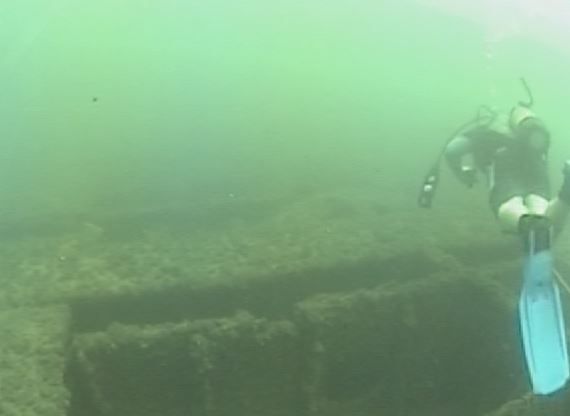As we continue to Explore New York, we go beneath the surface to check out some of the state's underwater history. There are several shipwrecks in both Lake Erie and Lake Ontario. Time Warner Cable News reporter Katie Gibas takes us to the Richardson, off the shores of Buffalo.
BUFFALO, N.Y. -- As the Queen City of the Great Lakes during the late 1800s and early 1900s, much of Buffalo's maritime history lies beneath the surface.
Strong storms made the bottom of Lake Erie the resting place for many a vessel, including The Richardson.
“In those days, it was important to keep the boat moving because you don’t make money when the boat is sitting in shelter,” said Jack Messner, Lower Lakes Marine Historical Society vice president.
The Richardson enjoyed years of transporting grain across the Great Lakes. In December 1909, The Richardson's captain was confident his vessel could make the trip to Buffalo despite severe winds, topping 72 miles per hour. But, once he got to Buffalo, he realized it was too risky to enter the shallow harbor.
"He's going to turn around and anchor. Turning around a big boat is not a simple job, and it’s a very risky job too. But he was able to do it,” said Messner.
Distress signals went unanswered and a crew of four men left in a life boat to make the trip for help. That was the last time they were seen alive. The wife of a cook died when a wave swept her over.
“The water kept coming in and the pumps could not longer keep up. Eventually the pumps weren’t able to keep up because the steam pressure started to drop because it was dousing the fires,” said Messner.
The ship sank but the top part was still above water, allowing the crew to stay safely on board until the nearby Paine could rescue them.
“It was a risky job on his part. As a matter of fact, if things didn’t go well, he could have ended up on the break wall at Buffalo,” said Messner.
Crews tried for years to remove The Richardson, several ships even crashed into it. It took until December 1913, four years after the ship sank, until crews decided the only way to remove enough of its components to allow other boats to travel safely was to blow it up.
It was forgotten about until two local divers visited it for the first time in 1958. Now, it's one of the most dived wrecks in Buffalo.
"A lot of people like exploring it for the fish and everything, a lot of crevasses and holes to look into," said Darryl Edmiston, Discover Diving owner. "I think it’s nice because when you drop off the side of the wreck, you can see it sitting in the mud on the bottom. You can see the side rails on it. All wreck diving is about exploring and seeing a piece of history, so whether it’s dynamited or sitting there in tact, it’s always fun to see it. You realize you’re going back and looking at something that was 100, 200 or more years old. So it’s fun.”
Most of the local dive shops will charter trips out to the wreck. Or you can use GPS coordinates to find it on your own boat.





